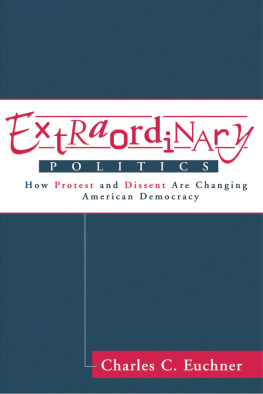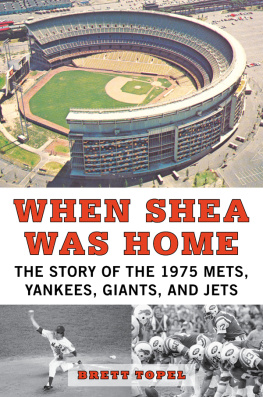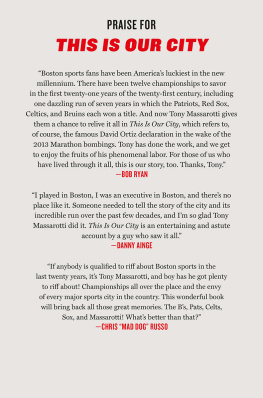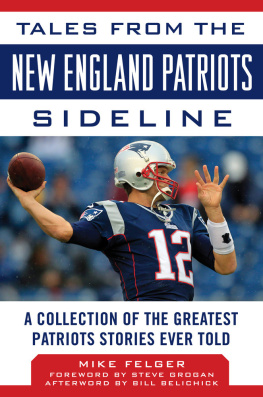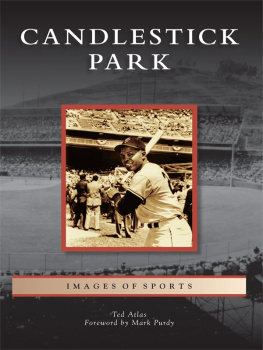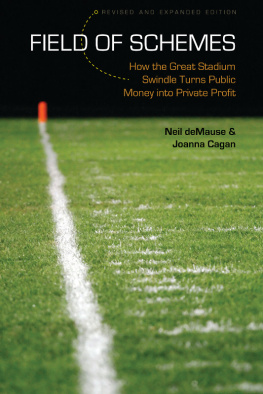Playing the Field

Playing the Field
Why Sports Teams Move and Cities Fight to Keep Them
CHARLES C. EUCHNER

1993 The Johns Hopkins University Press
All rights reserved
Printed in the United States of America on acid-free paper
Johns Hopkins Paperbacks edition, 1994
03 02 01 00 99 98 97 96 95 94 5 4 3 2 1
The Johns Hopkins University Press
2715 North Charles Street
Baltimore, Maryland 21218-4319
The Johns Hopkins Press Ltd., London
Photographs reproduced by permission: Frontispiece, Tom Harney (1989); p. 2, Tom Harney (1991); p. 22, Neil A. Meyerhoff ( 1992); p. 52, Tom Harney (1987); p. 78, Amateur Athletic Foundation of Los Angeles (Robert Hagedohm AAF/LPI 1984); p. 102, Neil A. Meyerhoff ( 1992); p. 132, Tom Harney (1989); p. 160, Tom Harney (1990).
Library of Congress Cataloging-in-Publication Data
Euchner, Charles C.
Playing the field : why sports teams move and cities fight to keep them / Charles C. Euchner.
p. cm.
Includes bibliographical references and index.
ISBN 0-8018-4572-6 (alk. paper) 0-8018-4973-X (pbk.: alk. paper)
1. SportsPolitical aspectsUnited StatesCase studies.
2. SportsEconomic aspectsUnited StatesCase studies.
3. Sports franchisesUnited StatesLocationCase studies.
4. Metropolitan areasUnited StatesCase Studies.
I. Title.GV706.35.E93 1993
796.0973dc20 92-43276
A catalog record for this book is available from the British Library
For my parents
Perry C. Euchner, Jr. and
Gale Young Euchner
Contents
Preface
When I look out the window of my apartment study, I can see Bostons Fenway Park. On game days, I get regular updates of the score, the ball-strike count, and batting averages from the scoreboard visible from my window. The roar of the crowd, audible from a couple blocks away, provides alerts of the excitement on the field. Organ music offers a prelude to the game, as well as intermittent serenades.
A neighborhood park is something special, for both passionate sports fans and more casual observers. The rhythms of the season make for a pleasant sense of stability and routine. The excitement of a pennant race reverberates on the street and among the neighbors. It is hard for any lifelong baseball fan not to engage in gloppy sentimentality about the game and the stadium: Just think, Babe Ruth used to play there, and Ted Williams, and Carl Yastrzemski, and
But professional sports, like much of our popular culture, can be understood only partly through its folklore and continuing excitement. Baseball and football are not only cultural institutions but also hardcore businesses. These sports are not very big, really, compared to the television industry or the steel industry or even the pork and beans industry, but they are still big enough to warrant careful analysis. As businesses, sports leagues can be as conniving, deceitful, and manipulative as they are allowed to be. Politicians always lurk nearby, seeking to exploit both the cultural and the economic dimensions of sports for their own purposes. Many people still think John V. Lindsay won reelection as New Yorks mayor in 1969 on the strength of the civic goodwill that followed the Amazin Mets world championship.
Fans do not like to acknowledge the more cold-blooded aspects of sports. Baseball especially is prone to the lyric incantations that are intended to deny the greed, corruption, and blackmail pervasive in sports. Sports sentimentalism is reminiscent of a Victorian prudes reaction to the theory of evolution: Descended from apes! My dear, let us hope that it is not true, but if it is, let us pray that it will not become generally known. The people who run professional and college sports are aware of the publics desire to believe the mythology surrounding the games. The romanticism of sports has spawned smaller industries in films, bubble gum cards, caps, sportswear, videos, books, and magazines.
This book attempts to analyze some of the aspects of professional sports that most fans would rather not consider. Specifically, I want to explore the feverish competition among North American cities to attract professional sports teams. In the last decade, virtually all the big cities in the United States, and a few small cities as well, have battled with each other for the right to host big league franchises. While facing staggering social and fiscal crises, cities spend hundreds of millions of dollars to build new stadiums and offer other enticements to private franchise owners. Municipal officials often push for stadiums and other favors to teams despite intense opposition in the neighborhoods and general opposition across the city.
Some of the most storied franchises in sports, like the Oakland Raiders and Baltimore Colts of the National Football League, have shifted to other cities regardless of years of loyalty from the hometown fans. Perhaps more important than the actual moves have been the threatened moves. By simply exploring options for playing in other citiesby playing the field, so to speakteams have gotten all manner of largess. New stadiums are only the beginning. The willingness to threaten departure has secured for teams a variety of land deals, lower taxes, more revenues from parking and concessions, control of stadium operations, guraranteed ticket sales, renovation of stadiums with luxury seating, control over neighborhoods and transportation systems. The list goes on.
A sports image sometimes used to describe unfair political confrontationsthe uneven playing fieldhelps get at the dynamic of city-franchise relations. To extend the metaphor, cities appear to play defense most of the time. City officials react to the offensive strategies of team owners, but it is hard for them to anticipate these maneuvers or develop an effective defense ahead of time. Franchises can pick and choose when to execute their plays; that timing advantage enables the teams to control the terms of debate. Teams skillfully divide and distract political opponents. Teams can often get players from the municipalitys side to join their cause. With influential government allies, teams also can do a complete end run around the political process; special authorities and indirect taxes can help proposals for stadiums and other benefits avoid normal political scrutiny. City officials do not seem able to confront teams authoritatively.
Boosters make grand claims for a sports teams effects on the city, based as much on their own wishful thinking as on hard data. If you build it, boosters say of a proposed stadium, the city will experience an economic renaissance. All kinds of wild numbers get thrown about as evidence of the economic growth that sports supposedly creates. Sports nuts, particularly those who write for newspapers or read scores for television stations, agree vociferously. That unreality makes the pro-sports arguments difficult to confront.
The claims are all a bit unreal, like the games themselves. Curiously, one of the reasons sports development manages to succeed in the contentious urban political system is not that it is so important but that it is in many ways nebulous and relatively unimportant. Opponents of new stadiums or other franchise benefits have testified that their activism was cut short by the realization that more important problems were begging for attention. Problems with drugs, schools, homelessness, and AIDS loom so large that it often seems foolish politically to get in a lather about a silly sports stadium.
Next page

